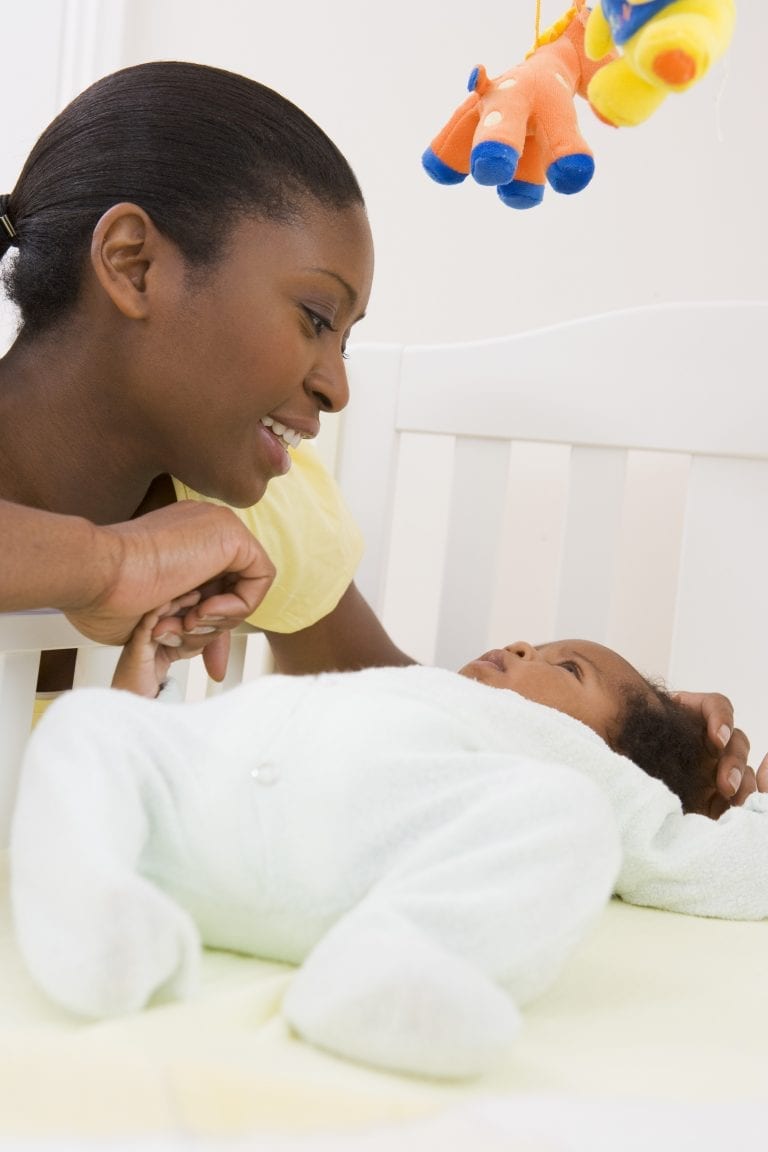Safe Baby Sleep
Did you know experts worldwide think most Sudden Infant Death Syndrome (SIDS) and other infant sleep-related deaths are preventable? Here in the U.S. we have one of the highest rates, with nearly 3,700 deaths a year—that’s an average of 10 babies a day!
More than 20 years of SIDS research shows there many practical things parents and other caregivers can do to help prevent these deaths. One of the most simple is practicing the ABCs of safe baby sleep. In my hospital, we tell parents “If you remember nothing else, remember the ABCs”:
A for Alone
B for Back
C for Crib
Alone
“Alone” means alone. Babies need their own separate sleep area, ideally in your room but not in your bed or with you. This is called room-sharing; research shows room-sharing reduces the risks of SIDS by 50% while offering many of the same benefits as bed-sharing.
Back
“Back” means baby needs to be positioned for sleep flat on his back, never on his tummy or side. Don’t worry; babies don’t choke more on their backs, not even the “spitty” ones. This single strategy is the most important in preventing SIDS.
Crib
“Crib” means a safety-approved crib, basinet or playard with a firm mattress covered in a tight-fitting sheet and nothing else but baby. No loose or fluffy items, bumpers, or stuffed animals.
Read: How To Deal With a New Baby
Other Strategies
Breastfeeding, pacifiers (after nursing is going well), infant immunizations, and well-baby checks all help protect against SIDS. Never allow your baby to become too hot (baby is sweaty in his clothes), and never smoke, drink alcohol or take illegal drugs around your baby.
SEE ALSO: Breastfeeding Success in the Early Days and Safe Baby Soothing
Train Your Caregivers
You may faithfully put baby to sleep on his back but do others caring for your infant do the same? Unaccustomed stomach sleeping is when a baby who normally sleeps on his back is placed on his stomach or side to sleep. This bumps up baby’s risk for SIDS by 7-8 times! These deaths usually happen under the care of a child care provider, friend or grandparent who doesn’t know the ABC’s of safe baby sleep. Share our ABC’s of Safe Baby Sleep card with all caregivers and put a copy near baby’s bed as an ongoing reminder.
ALSO READ: Help shush your fussy baby with Safe Baby Soothing
Can every case of SIDS be prevented? Probably not, but practicing the ABC’s of safe baby sleep gives peace of mind that you’ve done everything possible to reduce your baby’s SIDS risks.
Check out our Newborn Care section for more advice from nurses in caring for your baby, and don’t miss nurses’ advice regarding Safety & Childproofing and Diapering, which is sponsored by Huggies.
RELATED TOPICS:
Caregivers & Your Baby’s Safe Sleep
Crib Safety: Safer Sleep for Babies
Keep Your Baby Close While Sleeping
Buying The Right Crib For Baby
RELATED VIDEOS:
What is the Best Way to Swaddle My Baby?






Comments are closed.